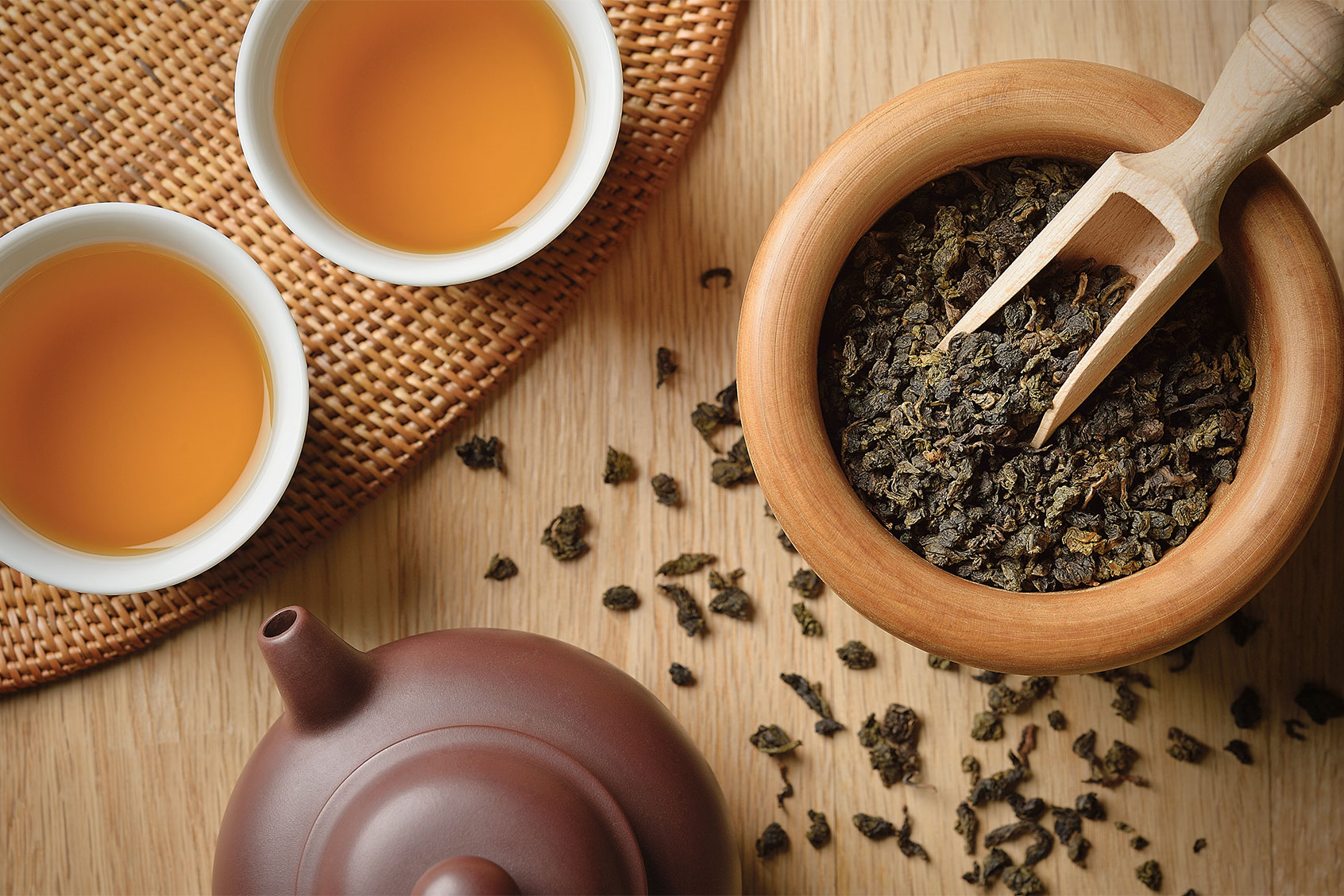I’m exponentially more of a coffee guy than a tea guy when it comes to, you know, actually drinking them — but when it comes to cooking, I think tea’s inherent properties and flavor profiles are a bit more complex. Yes, I’ll use coffee in tiramisu, chocolate baked goods and occasional sauces, but there’s a bit of a limitation to its uses beyond that.
That is definitely not the case for tea.
Tea offers such a tapestry of colors, flavors, hues and tastes: from black and green to white or chamomile to earl grey or herbal “teas,” there is such a deep, varied breadth of options.
You really can’t go wrong with cooking with tea, but I will note one thing: If you’re using tea to make or flavor something savory, steer clear of anything that’s saccharine, like a raspberry, lime or even a rooibos. This can add an off-putting flavor to your savory dish that will take into an odd, overly-sweet zone that won’t be especially appealing. Similarly, something like a chai might be too complex, which when combined with cooked foods, might turn into a muddled flavor experience.
Here’s a rundown of all the ways to cook with tea, in both sweet and savory iterations:
A tea-steeped
chicken breast adds a whole new level of complexity to something that might otherwise be relatively nondescript. Another option would be to poach the chicken breast in the tea, then shred it, then crisp it up in some hot oil in a shallow pan before seasoning with some salt and spices. The tea flavor will have permeated the chicken in a subtle manner, while the crisp texture and seasoning will help elevate the flavor overall. Throw it on top of some greens or even into a
taco shell or tortilla for a surefire, bang-up lunch.
From scones and
brownies to
cookies galore, tea is an excellent addition. Add a drizzle of reduction to the dough, sprinkle some ground leaves right into the batter or garnish with a touch of tea. You really can’t go wrong.
You can literally add a tea bag (or a few) to any sauce, let it infuse for a few minutes and then remove the bags. The tea flavor will have permeated the sauce itself, but because the tea itself isn’t actually “in” the sauce, the flavor will be more of an undercurrent throughout the sauce than a forefront note. It’s a great way to add a subtle
floral note, too.
Some rely entirely on water to
cook rice. That’s cool, but have you had rice cooked in English Breakfast tea and really rich chicken stock? It takes it to a whole new level entirely.
Want more great food writing and recipes? Subscribe to Salon Food’s newsletter, The Bite.
Use some ground tea leaves as you would seasoning, add a touch of brewed tea to provide some brightness or even drizzle some reduced tea as a garnish.
A comforting, rich bowl is always made better with a bit of tea.
Brew tea like you would normally. In a shallow pan, heat about a cup of the tea over medium heat, stirring or swirling every so often until the tea reduces and gets
thick and syrupy. You can also add other flavorings, such as shallot, Dijon mustard or
unsalted butter to help round out the tea flavor. Drizzle over a piece of tea-steamed halibut for a real treat.
Stir some reduced tea into your
yogurt, make a tea-maple drizzle for your
pancakes, waffles and
French toast or enjoy some tea flavor in your
oatmeal: There’s really no limit to the tea applications when it comes to
breakfast. Double down and serve your tea-infused breakfast with a cup of tea while you’re at it!
If you are a homemade
ice cream person, the taste of homemade tea-flavored ice cream is outrageous. Earl grey, green tea, rooibos or even the sweeter herbal teas make for an excellent flavor profile to anchor an ice cream around. Throw in some fun mix-ins or toppings and your kitchen will become the top ice cream parlor in town.
Some powdered tea leaves in a
frosting can be great and add some texture or a reduced tea stirred into a buttercream adds a new dimension of color and flavor.
If you have a smoker — or feel comfortable making a makeshift one at home or in your backyard — use some tea leaves in addition to your smoking woods, such as hickory, oak or cherry. The tea will provide some levity to the stronger, heavier
smoked flavors.
Ground your tea leaves to incorporate into herb or
spice blends or rubs. Conversely, brew some tea and then add some marinade ingredients like oil, garlic, shallot, sesame oil,
vinegar or fresh herbs and then marinate your favorite proteins and vegetables.
This one might come off a little wonky, but why not
cook some pasta in a mix of brewed tea and water? Cook up some
pierogis,
boiled potatoes or anything else you might often cook in a large amount of cooking liquid. I’m also partial to combos: some stock, some tea, some water. That way, the food itself won’t be inundated with any super-strong flavors and instead be subtly balanced yet totally flavorful.
Instead of just steaming with water, why not with some brewed tea? Or a mix of dried tea leaves, some tea and some water? Steaming seafood (
clams, mussels, cod,
shrimp) this way is an amazing way to impart some light flavor to help elevate the fish yet maintain the saline, trademark flavor.
Of course, tea is primarily regarded as a beverage. Why not use it as a primary ingredient in a
cocktail or mocktail? The familiar flavor of tea — along with whatever complementary ingredients — will make for a balanced, refreshing drink. Green tea is an excellent choice in mixed drinks.
Read more
about this topic

